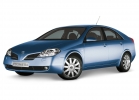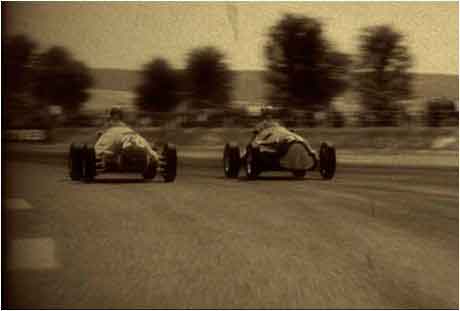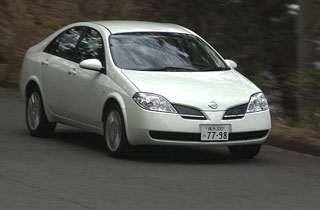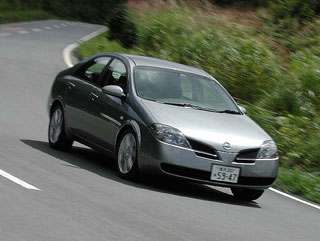Test drive Nissan Primera sedan since 2002 sedan
DDD
The offer in the D-class is huge. The choice is rich. Many manufacturers often direct the power of their technical and design developers to this segment. Class D cars often crown the lineup, and are sold much more actively than the models of the next business class. Real hits are represented here. Nissan Primera Leader of Sales in our market. Opel Vectra is one of the most characteristic representatives of their subgroups on the European continent. And Peugeot 407 The latest model of the company and, I am not afraid to say, the quintessence of the entire French auto industry.Peugeot 407
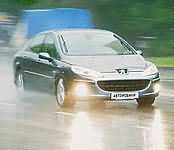
The price of a tested car is $ 34,000 max. Power 160 liters. With. at 5650 vol./min Max. speed 209 km/h acceleration 0100 km/h 11.2 s
Opel Vectra
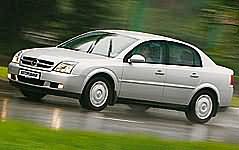
The price of a tested car is $ 30,740 max. Power 147 l. With. at 5800 about./min Max. speed 210 km/h acceleration 0100 km/h 10.8 s
Nissan Primera
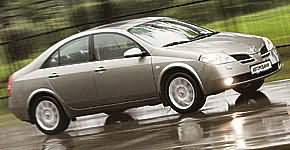
The price of a tested car is $ 29 100 max. Power 140 liters. With. At 6000 rpm/min Max. speed 191 km/h Acceleration 0100 km/h 10.9 s
This trinity is surprisingly well suited for comparative testing. All sedans what hatchback can be here? Our people will not understand if it is not solid. Of course, automatic boxes with manual control. And the engines are close in volume. Two cars 2.2 liters, and only a two -liter Japanese. Power and dynamic characteristics are similar. Well, most importantly, prices almost coincide. There is all the prerequisites for objective comparison! The Japanese and German cars, although they have been produced for a couple of years, look quite avant -garde and secretly disputing the palm of the championship in terms of price/quality. And Peugeot so far looks like a stranger, but attracts general attention. Let us, first of all, take a closer look at the 407th (but not Muscovite!). And the other two cars will be starting points and bindings to the already known coordinate system.
Dynamics
By definition, the D-class with average motors is required to go quite confidently. We start on Peugeot 407 in real urban conditions. Every 100200 meters traffic lights, and striving to switch to red. Start-finish, start-finish, and so on infinity. Convenient with a machine gun. And the comparison is correct everything in a row, leg on the brake. The transfer to gas occupies hundredths of a second a little longer than the signal from the retina goes into the brain, from where the command comes to the muscles of the leg. And I do not complain about the delay in the reaction, and I just want to slip quickly, because at the next intersection the previous three rows somehow turn into two. But the reason for excitement should not be nearby without any excitement to puff for Ford Focus and VAZ-2108. They are also waiting. And so she, the go -ahead of the end, was not noticed by honest, Falstart was not noticed. I drown on the trunk. The motor makes a heal, Mr. Pae makes reluctant updating forward, and the small -scale launching in the neighborhood ... They are already finishing rebuilding before my nose. And let me after a second after one and a half seconds on their tail and ready to overtake, but it is physically impossible to do. And I can be comforted by the fact that I am food in an expensive, beautiful car, and a small asphalt vanity is destroyed by non -played youth and flawed, notorious drivers. And in general, shouldn't the automatic transmission be smoother, softer, more thoughtful than primitive hard mechanics? Must, of course, but the whole question is in the degree of difference. And to feel this, we will move to another car. Opel Vectra, for all the modern model of the current model, no one reads it is short -speed and dynamic. We translate the automatic transmission selector into Drive. The movement of the lever is impeccable to the best of the viscous, but unambiguously clear, understandable even without visual confirmation. The first touch to the gas pedal responds not only to take off the tachometer arrows, but also by an immediate thrill forward, quite sharp and adequate. The transition to the second almost at the red zone of the turning scale, a distinct step between transmissions, and the next step is harnessed to the process not just active, but, most importantly, timely speeding of a large and weighty car. But in order to restore justice, it is worth noting that Opel does not very willingly slows down the engine and switches down. He, as it were, rolls on neutral, even when you just let go of gas. And Peugeot, on the contrary, is actively involved in a reduction in revolutions. One has only to loosen the pressure on the accelerator pedal, and the car unequivocally evaluates such a message as the command to brake the engine. And after that follows a soft bit and the transition to a reduced gear. And the efficiency of braking in Peugeot is clearly higher. The elegant machine willingly and without resistance squats with the whole body to the floor and freezes with such speed, as if in some kind of viscous environment, and not worth four wheels on the asphalt. And at the same time a minimum of rolls and uncomfortable sensations! Against such a background, Primera behaves even more original. The boxing box accustoms sidelines to a completely different acceleration algorithm. The most sharp, not dabbled by the hydrotransformer start. The rigid connection of the engine with the wheels allows Nissan to burst from the place. At first, he even makes competitors. But later, the engine, which is 10% inferior to it, weakens its pressure. This is especially noticeable against the background of constantly high speeds. After all, there are no fixed transmissions and, when gas typing, the engine lugs and does not reduce tonality until you release the pedal. You only feel how, over time, the gear ratio gently decreases. First, such a car’s behavior scares, and images of slipping clutch and the box that jammed in the second gear of the box emerge from the subconscious. But after the first day of communication with the variator example, you noticeably penetrate the transmission with non -fixed gear relations and begin to be perplexed why all manufacturers have not yet switched to such a drive scheme? The reactions are faster, time is not spent on transition from transmission to transmission. And in addition, it is worth considering that the variator is cheaper and more durable than the traditional machine! Judging by the speed of introducing such boxes on modern models, they will soon squeeze not only the automatic transmission, but also the usual mechanics.
Controllability
Of course, first of all, we were interested in the manageability of the novelties of Peugeot 407. And a modern elegant machine with complex cinema of the suspension (see cars # 7/2004) did not fail. True, expectations are not justified in everything. So, the steering does not give the driver a complete picture of the interaction of the wheels with the road. Near zero on the steering wheel is empty and restless. And with the rapid rotation of the steering wheel, although it is poured with weight, it does not become an accurate device in the hands of a sensitive experimenter. But the lack of informativeness does not reduce the impeccability of prescribing the specified curved trajectories. As well as comforts the stable position of the body over the road. A hard suspension, designed for transverse overloads, does not make wads with wooden holes swallow just with a bang. Here is such a French riddle. Against this background, Opel is the opposite. The burgher's dream behaves so correctly and predictably that you begin to look for something to cling to, and you are annoying when you never find! A rather sensitive steering wheel, capacious pendants and the adequacy of reactions reduce the opportunity to knock the vector from the path of the true. When moving in a straight line, the car behaves like an arrow with a heavy tip, confidently and accurately. And in the rearrangement does not seek to tear off the limb from the asphalt and lose contact with the road. The only claim is low front apron. The chances of scratching him about the curb are even higher than that of the French car, whose protruding chin a priori does not allow to climb on irregularities. Compared to them, Nissan has the coolest angle of entry, leaving the opportunity to storm obstacles. But even the Japanese machine willingly shouts with a belly about the average height of unevenness. I must admit that the whole trinity is designed exclusively for even asphalt. But if you do not leave the city or highway, then the most interesting to maneuver on the example. The force on the steering wheel here increases in direct dependence on efforts attached to the steering wheel. And the set of gas in the bend is completely natural and without any surprises straightens the curve. Excellent visibility of the front allows you to park not along the edge of the wings, which is absolutely not visible, and not by the sound, which in Nissan perfectly dies, but in intuition. And the lack of visibility from the back is compensated by a video camera implanted near the license plate. This is almost the main horse’s horse. Through the mirrors, even the most panoramic ones, you will not see half of what comes into the field of view of the camera. Information about what is happening behind the car, and especially at the very bottom, by the road, is displayed on the central display. In the updated version, he became colored and even at night gives such a bright, light -linked picture that I want to attach something similar to the front of the car and look at the world through the TV. Opel's visibility also does not cause any complaints, despite large dimensions and a high trunk. But the glazing of Peugeot is not enough, and if it is not parking, it would be completely uninteresting to take it back. But forward here you can see best thanks to a high lobby, whose surface is not cleaned by parallel, but oncoming wipers.
Ergonomics
If you choose between good and excellent, then the first seems more preferable to me. The gray interior of the Vectra is as kind as bored. Here, every detail confidently declares: pay attention, made in Germany! The buttons do not dangle, the plastic is thick and booming, the handles-cereal peaks are properly stiff. Whatever you take for, you are smearing a thing. And the chairs are the most ergonomic. The updated interior examples are also very kindly tuned to the owner of the car and its passengers. A whole, avant -garde design is light, ironic and far from stereotypes. How quickly you get used to the central location of the instrument panel, a horizontal keyboard and comfortably linked in the hand with handles and levers! The usual riding in such a machine gives joy and does not bother. Probably, the creators of Peugeot also wanted their brainchild to turn out beautiful and comfortable. And at first glance, the cabin is quite pretty. But, as you know, the devil is hidden in small things. And the French, it seems, just forgot to try on everything for themselves. And if they tried on for themselves, then they did not take too critically to many minor inconveniences revealed at the stage of refinement and fitting. It is not enough to list all the flaws of the article. It would be enough for many how the sting of the key in an audible key fob is very similar to the truth, but hack. The joystick of adjustments made under the wheel is not worthy of not only the modest 206th, but also the smallest Koreans, it is flimsy, with burrs and an incomprehensible algorithm of work. It is clear that it was, and it costs three centimas, but it spoils the impression. And so no matter what. I guess that many will say that it is catching fleas and small nit -picking. But for 35 thousand. e. We have the right to take and ask for flaws. But still rainy weather finished us off. Because the rubber seal of the right door fell! I do not remember such a precedent in any new car. And the owner of a particular machine does not matter is a typical phenomenon or an exceptional case.
Summary
It is easy to guess which car has become an outsider today. Yes, it seems that wine in France is better succeeded ... And at least beauty requires victims. And considerable. It is much more difficult to determine the leader. Frankly, the scales of the scales were practically frozen in balance. But, having swayed, they nevertheless bowed in favor of Nissan Primera. The MCVT box and the rear view camera played a role. And all other things being equal, the price is less than the Opel Vectra percent by five percent. Here we have such a non -general triangle. And what, do the sales volumes confirm the proportional popularity of each model? Look at the statistics or just look at the everyday Moscow flow of cars.
Text Vladimir Smirnov photo Alexander Nozdrin
Source: Cars
Video Crash tests Nissan Primera sedan since 2002
Nissan Primera Sedan tests since 2002
Nissan Primera Crash Test sedan since 2002
Krassh Test: Detailed Information29%
Driver and passengers
9%
Pedestrians
Nissan Primera malfunctions since 2002
Nissan Primera Sedan malfunctions: Detailed information| Primera sedan since 2002 | |
|---|---|
| Engine |  |
| Transmission |  |
| Control system and suspension |  |
| Brake system |  |
| Air heating and air conditioning |  |
| Launch and charging system |  |
| Electric components and so on |  |
| Corrosion body stability |  |


